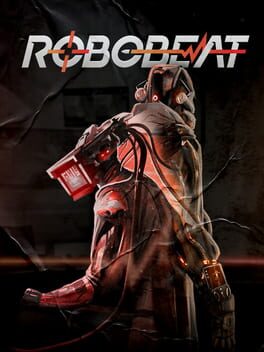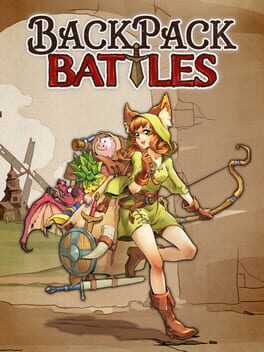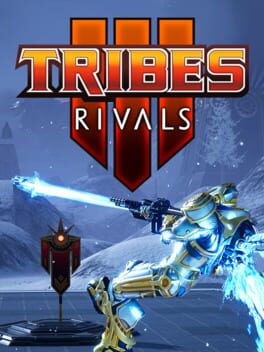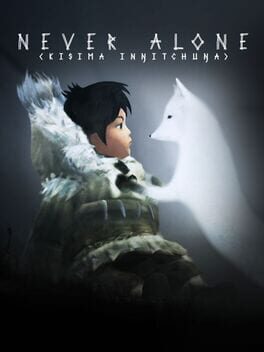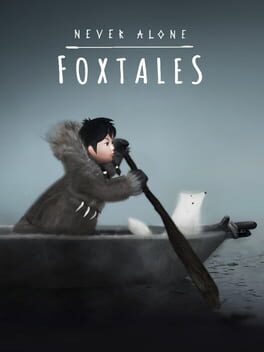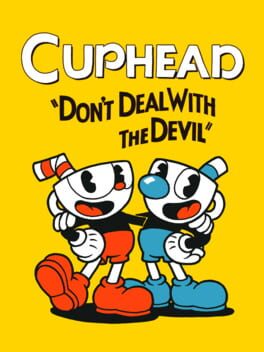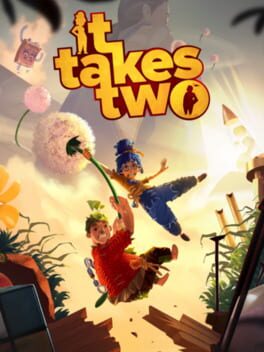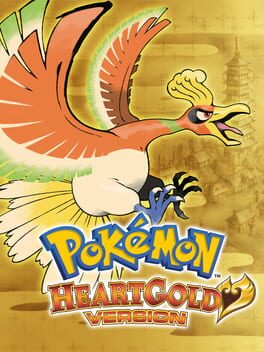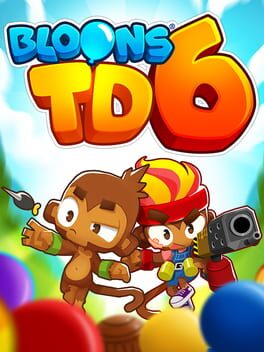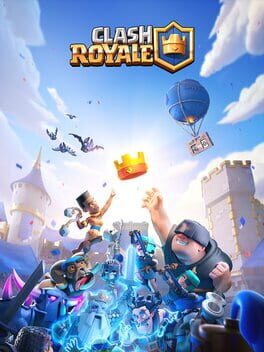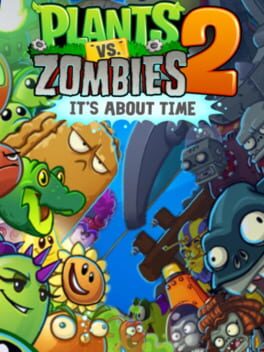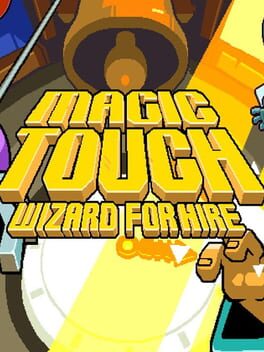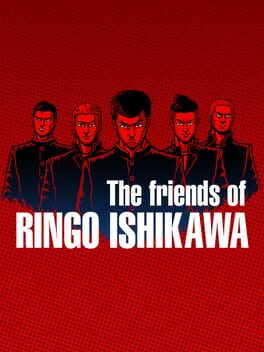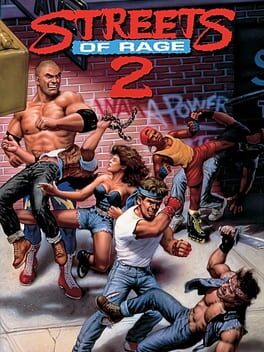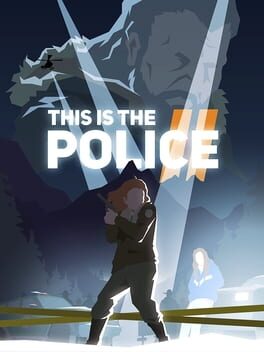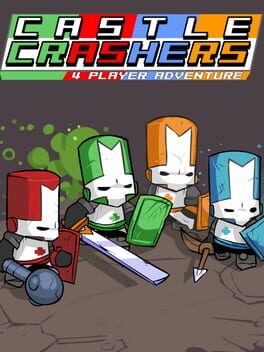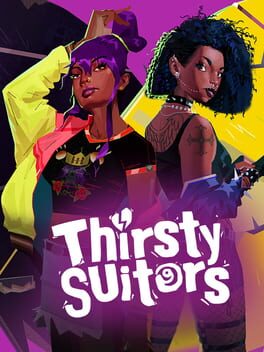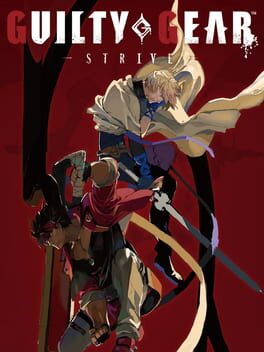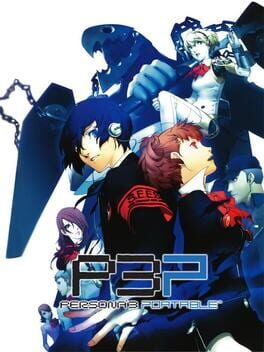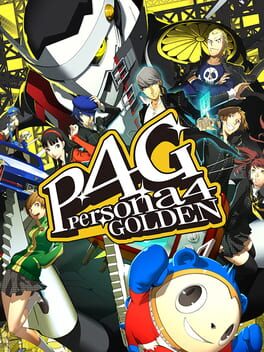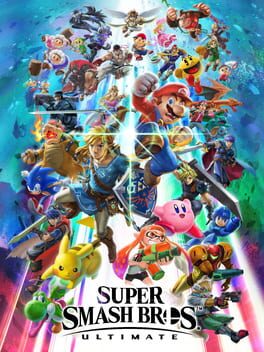302 reviews liked by Kat0w
Zelda II was one of several mainline Zelda games I had yet to play at this point. I didn't know why I skipped trying this one out when I went and beat Zelda 1 in 2020. Maybe it was because it's such a departure from every other game, or the fact I heard it wasn't good. Either way, this marathon gave me a good excuse to finally play this one. Sadly, what I've heard people say about this game is true. I unfortunately found this game to be straight up bad overall.
The story this time around revolves around the Triforce of Courage. The last game only had the Triforce of Wisdom and Power, but this game reveals there's a third. Basically, the King of Hyrule hid it far away so no evil can ever get it. The prince, aka Zelda's brother, wants it for himself. He gets the help of a wizard to have Zelda tell him where it is, since only she knows, by using a truth spell on her. When that doesn't work, the wizard puts Zelda to sleep, and so Link must get the Triforce of Courage and wake Zelda up from the sleep spell. He must do this by going to each of the six main palaces and placing a crystal there, so it opens up the Great palace, which houses the Triforce. Pretty effective plot tbh, it's weird that Zelda has a brother because he never gets mentioned in any other game (at least to my knowledge) but it's interesting.
The first thing you'll notice when actually starting the game, is the change in gameplay. This is no longer a top-down action adventure but is a side-scroller. This is unlike every other mainline Zelda ever and it really does feel off from the rest of the games. Along with it being a side-scroller now, there are also some light RPG mechanics too. There is exp in this game that you get by killing enemies (or collecting exp bags) and you can level up when you get the required amount. You either upgrade your health, magic or your attack power and the game always has a set path with whatever one you get on level up. With the magic, you can get spells throughout the game, and they can be quite useful. The life spell, for instance, is the best spell in the game since it's just a straight up heal. Same with the shield spell, since both make you survive longer. Believe me tho, you're gonna need them! Anyways, the exp system was actually one of the few things I can praise about this game. I thought it was pretty satisfying leveling up every time and it at least makes this game stand out from other Zelda games (if the side-scrolling nature didn't do that already).
The overworld in this game is more like an older RPG than how Zelda 1's was. Instead of having to bomb random locations to find secrets, this game has you progressing the world by using the items you get from palaces. Towns have NPC's that will let you in their house to get a spell in exchange for an item you find. Overworld encounters are now represented by little enemy sprites, that appear once you take a certain number of steps, and they put you into a battle scenario. They can be EXTREMELY obnoxious with how frequently they appear and with how hard it is to dodge them. If you stay on the roads that appear in game, the encounters won't appear but if you take one step off of the road (or just aren't on the roads at all which happens a lot) they will so the roads only help a tiny bit I think. All of this just makes this feel less like a Zelda game and more like an older adventure/RPG. I like the leveling up, but all of this is a downgrade from Zelda 1's formula, even if I wasn't in love with how that game did things.
The start of the game up until Death Mountain, was honestly not bad and was a solid time. Once you get to death mountain tho, this game shows its true colors. This game is incredibly difficult and incredibly bullshit a lot of the time. I know this is an NES game, so this is kinda expected, but Zelda 1 was not like this. Zelda 1 could be hard (mostly in the endgame) but it never felt like NES hard, hard for the sake of it basically. This game definitely does tho and it's worse for it. Death Mountain and the last area and palace were the absolute worst parts of the game. Both were just full of obnoxious BS and I just don't find that very fun. The rest of the game is like that too but to a lesser extent. I had to save state pretty much all the time from Death Mountain until the end, and I don't feel bad about it. It also doesn't help that when you die, there are also lives in this game because you NEED those for a side-scroller I guess, you go back to where Zelda's sleeping (aka the beginning of the game). You can unlock items that make this way better than it sounds, but if you die before you get the hammer and unlock the first shortcut, you must do all of death mountain over again. Without save states, this is very easy to have to do since this game is so brutal. If this game wasn't so hard and bullshit, this wouldn't be too bad because the general gameplay is solid. Link feels good to control and the moves he gets are cool. But due to the NES difficulty, those good elements don't mean much.
Going into the palaces, they're hit or miss. A couple of them I didn't find too bad and actually somewhat enjoyed, while the others were just hell. Palaces are a lot longer in this game and have barely any puzzles. Zelda 1's dungeons weren't super puzzle heavy, but they were more than just find key..unlock door and progress. This game focuses more on the combat than the puzzles and its worse for it since most of the enemies are just frustrating. The bosses aren't anything special, they're either piss easy or super obnoxious like Thunderbird. I always heard Dark Link (or Link's Shadow I guess) was absolutely brutal if you didn't do the duck and swipe method. I just killed him super easily by doing the jump attack method I do on other enemies. Didn't even need to use the shield spell, he was one of the easier bosses in the game lol. Idk if I just got lucky, or I'm just that good but I thought it'd be interesting to mention.
The OST is definitely not as good as the first game's. The palace theme is great and iconic due to it appearing in Smash Bros but that's about it. Every other song was okay at best to me. Nothing, not even the palace theme comes close to being iconic as the overworld theme in the first game.
All in all, while some of the mechanics like leveling up and Link's new swordplay are interesting, it doesn't change the fact this game is just a brutal, bullshit mess of a game. I said it before and I'll say it again, it's hard for the sake of it and just don't like games that do that. It also doesn't help that no other mainline Zelda game that I've played is like this lol. There are some Zelda elements here and there, but this really doesn't feel like a Zelda game to me. I'm glad I finally played this and got it off my bucket list, but I certainly will never be playing this again.
The story this time around revolves around the Triforce of Courage. The last game only had the Triforce of Wisdom and Power, but this game reveals there's a third. Basically, the King of Hyrule hid it far away so no evil can ever get it. The prince, aka Zelda's brother, wants it for himself. He gets the help of a wizard to have Zelda tell him where it is, since only she knows, by using a truth spell on her. When that doesn't work, the wizard puts Zelda to sleep, and so Link must get the Triforce of Courage and wake Zelda up from the sleep spell. He must do this by going to each of the six main palaces and placing a crystal there, so it opens up the Great palace, which houses the Triforce. Pretty effective plot tbh, it's weird that Zelda has a brother because he never gets mentioned in any other game (at least to my knowledge) but it's interesting.
The first thing you'll notice when actually starting the game, is the change in gameplay. This is no longer a top-down action adventure but is a side-scroller. This is unlike every other mainline Zelda ever and it really does feel off from the rest of the games. Along with it being a side-scroller now, there are also some light RPG mechanics too. There is exp in this game that you get by killing enemies (or collecting exp bags) and you can level up when you get the required amount. You either upgrade your health, magic or your attack power and the game always has a set path with whatever one you get on level up. With the magic, you can get spells throughout the game, and they can be quite useful. The life spell, for instance, is the best spell in the game since it's just a straight up heal. Same with the shield spell, since both make you survive longer. Believe me tho, you're gonna need them! Anyways, the exp system was actually one of the few things I can praise about this game. I thought it was pretty satisfying leveling up every time and it at least makes this game stand out from other Zelda games (if the side-scrolling nature didn't do that already).
The overworld in this game is more like an older RPG than how Zelda 1's was. Instead of having to bomb random locations to find secrets, this game has you progressing the world by using the items you get from palaces. Towns have NPC's that will let you in their house to get a spell in exchange for an item you find. Overworld encounters are now represented by little enemy sprites, that appear once you take a certain number of steps, and they put you into a battle scenario. They can be EXTREMELY obnoxious with how frequently they appear and with how hard it is to dodge them. If you stay on the roads that appear in game, the encounters won't appear but if you take one step off of the road (or just aren't on the roads at all which happens a lot) they will so the roads only help a tiny bit I think. All of this just makes this feel less like a Zelda game and more like an older adventure/RPG. I like the leveling up, but all of this is a downgrade from Zelda 1's formula, even if I wasn't in love with how that game did things.
The start of the game up until Death Mountain, was honestly not bad and was a solid time. Once you get to death mountain tho, this game shows its true colors. This game is incredibly difficult and incredibly bullshit a lot of the time. I know this is an NES game, so this is kinda expected, but Zelda 1 was not like this. Zelda 1 could be hard (mostly in the endgame) but it never felt like NES hard, hard for the sake of it basically. This game definitely does tho and it's worse for it. Death Mountain and the last area and palace were the absolute worst parts of the game. Both were just full of obnoxious BS and I just don't find that very fun. The rest of the game is like that too but to a lesser extent. I had to save state pretty much all the time from Death Mountain until the end, and I don't feel bad about it. It also doesn't help that when you die, there are also lives in this game because you NEED those for a side-scroller I guess, you go back to where Zelda's sleeping (aka the beginning of the game). You can unlock items that make this way better than it sounds, but if you die before you get the hammer and unlock the first shortcut, you must do all of death mountain over again. Without save states, this is very easy to have to do since this game is so brutal. If this game wasn't so hard and bullshit, this wouldn't be too bad because the general gameplay is solid. Link feels good to control and the moves he gets are cool. But due to the NES difficulty, those good elements don't mean much.
Going into the palaces, they're hit or miss. A couple of them I didn't find too bad and actually somewhat enjoyed, while the others were just hell. Palaces are a lot longer in this game and have barely any puzzles. Zelda 1's dungeons weren't super puzzle heavy, but they were more than just find key..unlock door and progress. This game focuses more on the combat than the puzzles and its worse for it since most of the enemies are just frustrating. The bosses aren't anything special, they're either piss easy or super obnoxious like Thunderbird. I always heard Dark Link (or Link's Shadow I guess) was absolutely brutal if you didn't do the duck and swipe method. I just killed him super easily by doing the jump attack method I do on other enemies. Didn't even need to use the shield spell, he was one of the easier bosses in the game lol. Idk if I just got lucky, or I'm just that good but I thought it'd be interesting to mention.
The OST is definitely not as good as the first game's. The palace theme is great and iconic due to it appearing in Smash Bros but that's about it. Every other song was okay at best to me. Nothing, not even the palace theme comes close to being iconic as the overworld theme in the first game.
All in all, while some of the mechanics like leveling up and Link's new swordplay are interesting, it doesn't change the fact this game is just a brutal, bullshit mess of a game. I said it before and I'll say it again, it's hard for the sake of it and just don't like games that do that. It also doesn't help that no other mainline Zelda game that I've played is like this lol. There are some Zelda elements here and there, but this really doesn't feel like a Zelda game to me. I'm glad I finally played this and got it off my bucket list, but I certainly will never be playing this again.
I first played Link's Awakening on my 3DS years ago. I got it on the eShop one day after a Youtuber I liked was let's playing it, and seeing as I was a Zelda fan at this point, I figured I'd enjoyed it. I think I got up until Eagle Tower and dropped it? I at least don't remember ever beating this game. Fast forward to the beginning of 2022, I had just gotten the remake for Christmas and was excited to play it. I actually beat that version this time and had a great time. Now with this marathon, I can finally beat this version of the game. I think overall I might prefer the remake, but this version is still good and Link's Awakening is still a good game overall.
Also quick note before the review: I was originally going to play the three CDI Zelda's next but decided against it so I'm skipping those. I also know this is the DX version, and that technically released after Ocarina of Time, however the majority of this game is still the original Link's Awakening which released 5 years before OOT so I just decided to play this first.
Anyways, Link's Awakening. This released 2 years after A Link to the Past and compared to that game and even the Zelda games before it, this game's plot and general atmosphere is very different. The story this time around is pretty simple. This is the same Link as the one in ALTTP and he regularly goes out to sea to train in other countries in case of further threats. One day, a storm destroys the boat he is on and he is washed ashore on Koholint Island. This girl named Marin finds him and brings Link to her home where he wakes up to see her and her father Tarin. Link leaves the home hoping to learn what this island is about and how he can get off of it. Along the way, he meets an owl that tells him to escape this island he must get the 8 instruments of the sirens and wake the wind fish (who resides in a giant egg) with them. Halfway into the adventure however, Link finds out that the entire island may just be a dream created by the wind fish. Whether that's true or not, Link continues to gather the instruments so he can wake the wind wish and get off the island. It's a simple plot but the first thing you'll notice is that it's WEIRD. I did not mention Zelda because she is not in this game. No Triforce or Ganon either. The big staple characters aren't in this game, instead it's an entire brand new cast. You have Marin and Tarin, the other villagers of the town they're in. There are many animal NPC's through out the world, there's even and animal village too lol. The villagers eventually can't recall how long they've been on the island. Throughout the game you even start seeing things from other Nintendo games like the many different Mario enemies, a girl gives you her photo and she looks just like Princess Peach and there's even an enemy that looks and acts like Kirby. This along with the general plot gives this game such a weird, dream-like atmosphere. That's kind of a joke but it's true, they really did a great job at making this game feel like a dream. This is honestly my favorite aspect of this game; just how weird and different it feels from other Zelda games.
The general gameplay is similar to ALTTP, tho it's not quite as linear as that game. You're still going through dungeons and what not but they aren't marked on your map. It can be a bit cryptic at times, trying to figure out how to get into each dungeon, because now you have to find each dungeons respective key to unlock it. Besides that, the overworld itself is pretty fun tho it can get a bit tedious to backtrack through. There are a couple warp points throughout the world you can warp to, but I think there should've been more because even with them, backtracking is plentiful and it's not super fun in this game. The reason for that is, and it's the game's biggest issue, there's only two item slots in this game and stuff like the power bracelet and even the sword takes up a slot. I know this is a Gameboy game, so there was only A and B to work with but having to constantly switch between items to explore can get a bit tiresome. That plus when you don't have an item, needed to clear an object, equipped, an unskippable message appears every time to let you know you need that item. So, whatever you do, don't touch any rocks without having the power bracelet equipped. Like I said, this is my biggest annoyance in the game and while I still enjoyed the overworld despite this, it can be annoying due to these issues.
Exploring the overworld, you'll find many optional secrets just like ALTTP. Like that game, there are caves all throughout and you'll usually need a dungeon item to get whatever treasure is inside. The puzzles in these might actually be more complex than ALTTP's, either way it's good that they're back in this game. You'll also find those weird NPC's throughout the world as well. There's actually a long trade quest in the game, that you would think would be optional due to how long and exploration based it is but it's not. It's required at several points to progress and also the reward you get at the end of it is too. It's not the worst thing in the world but I had forgotten how to do parts of it so I had to look some of it up online so that might stump new players.
Next I want to talk about improvements this game makes compared to past games. This is a Gameboy game so obviously I can't compare its visuals to ALTTP but for a Gameboy game this looks super nice and compared to the first two Zelda games, this also looks nice than them. They did a great job with all the pixel art in this game and I can see why some people prefer this version of the game compared to the remake, based on the art style since it's super charming here. This game also improved on stuff from ALTTP as well funnily enough. You could collect items with you sword in Zelda 1 but not ALTTP for some reason, luckily, you're able to in this game again. I also found the Pegasus Boots better in this game due to you not needing to press and hold the item button again and again when you want to dash constantly. You just need to hold it and Link will start to dash on every screen he's on now. Something that's kinda weird compared to past game is the rupees. Every rupee that spawns in the overworld from cut bushes or defeated enemies is a single rupee. The only way to get more than that at once is with chests and they can give you 20, 50, 100 or even 200 rupees. It's an interesting change but probably a needed one since this was a Gameboy game and this game was already probably pushing the system to its limits.
The dungeons in this game are actually really solid. They're not as vibrant or as memorable visually as ALTTP dungeons however they're full of puzzles, maybe even moreso than ALTTP. That game has a bit more of a focus on combat, and I still might prefer that games dungeons just because of the aforementioned visual memorability. But even still, very good set of dungeons that even stumped me a bit at times. The items you get in these though are pretty solid. You have the aforementioned power bracelet, the magic rod from past Zeldas, the hookshot from ALTTP as well as the flippers. A lot of these are just older items but the standout item, and the one that actually makes the game more fun to play in general tbh, was the roc's feather. When you equip this, you can jump. That's it but it makes a world of difference in how you can play and can absolutely just destroy some bosses super-fast if you're skilled enough. If I didn't need any item to progress, I just went with my sword and the roc's feather. That was my go to set of items. There was an annoyance I had with the items. Since there's no way to speed up text, you'll be seeing the same dialogue for the map and compass over and over again. The map is fine since it's so short but the compass is like three times as long or something and they decided to let you know there's a new sound that plays whenever a chest is in the same room as you. That's cool...you don't have to tell me every time I do a dungeon tho! The bosses at the end of dungeons might also be an improvement from ALTTP. They aren't as flashy of course but they also don't require red/green potions sometimes to defeat, they all have dialogue this time which gives them more character and they're also just really weird or goofy which fits the setting of the game. I'd say they're overall maybe simpler to fight than ALTTP's bosses but simple doesn't equal bad. The final boss tho, had several different phases that took the form of bosses you fought in past games, and it also made use of several of Link's items. Because of that, it was easily the best boss in the game.
The soundtrack in this game, even tho its a Gameboy game, is really melancholic at times and is charming as hell. The signature Ballad of the Wind Fish(I sent Marin's version is easily my favorite song in the game. Mabe Village,Tal Tal Heights and the Ending Theme were my other favorites. The whole soundtrack is good however, and something else this game had over ALTTP is the fact each dungeon had their own unique theme. Now I can't say I prefer any of them over the two ALTTP had but they're still mostly solid here.
While I did have some issues that held this game back from being better than ALTTP, this is still a really solid Zelda game and one that is unique in the story it tells and the atmosphere it provides. It must've been amazing having a game like this on the go back in the day. Like I said as well, I do prefer the remake just because of the some of the improvements it made. I'm kind of known as the original game enjoyer, so for me to prefer a remake over the original is very odd. We'll get to that game way down the line but even if I like that one more, it doesn't stop this version from being good. It certainly has its own charm as well.
I think I'm going to take a small break in between this game and Ocarina of Time. I'm thinking maybe my Plants vs Zombies replay is next? Either way, stay tuned for that and then Ocarina of Time after in the near future!
Also quick note before the review: I was originally going to play the three CDI Zelda's next but decided against it so I'm skipping those. I also know this is the DX version, and that technically released after Ocarina of Time, however the majority of this game is still the original Link's Awakening which released 5 years before OOT so I just decided to play this first.
Anyways, Link's Awakening. This released 2 years after A Link to the Past and compared to that game and even the Zelda games before it, this game's plot and general atmosphere is very different. The story this time around is pretty simple. This is the same Link as the one in ALTTP and he regularly goes out to sea to train in other countries in case of further threats. One day, a storm destroys the boat he is on and he is washed ashore on Koholint Island. This girl named Marin finds him and brings Link to her home where he wakes up to see her and her father Tarin. Link leaves the home hoping to learn what this island is about and how he can get off of it. Along the way, he meets an owl that tells him to escape this island he must get the 8 instruments of the sirens and wake the wind fish (who resides in a giant egg) with them. Halfway into the adventure however, Link finds out that the entire island may just be a dream created by the wind fish. Whether that's true or not, Link continues to gather the instruments so he can wake the wind wish and get off the island. It's a simple plot but the first thing you'll notice is that it's WEIRD. I did not mention Zelda because she is not in this game. No Triforce or Ganon either. The big staple characters aren't in this game, instead it's an entire brand new cast. You have Marin and Tarin, the other villagers of the town they're in. There are many animal NPC's through out the world, there's even and animal village too lol. The villagers eventually can't recall how long they've been on the island. Throughout the game you even start seeing things from other Nintendo games like the many different Mario enemies, a girl gives you her photo and she looks just like Princess Peach and there's even an enemy that looks and acts like Kirby. This along with the general plot gives this game such a weird, dream-like atmosphere. That's kind of a joke but it's true, they really did a great job at making this game feel like a dream. This is honestly my favorite aspect of this game; just how weird and different it feels from other Zelda games.
The general gameplay is similar to ALTTP, tho it's not quite as linear as that game. You're still going through dungeons and what not but they aren't marked on your map. It can be a bit cryptic at times, trying to figure out how to get into each dungeon, because now you have to find each dungeons respective key to unlock it. Besides that, the overworld itself is pretty fun tho it can get a bit tedious to backtrack through. There are a couple warp points throughout the world you can warp to, but I think there should've been more because even with them, backtracking is plentiful and it's not super fun in this game. The reason for that is, and it's the game's biggest issue, there's only two item slots in this game and stuff like the power bracelet and even the sword takes up a slot. I know this is a Gameboy game, so there was only A and B to work with but having to constantly switch between items to explore can get a bit tiresome. That plus when you don't have an item, needed to clear an object, equipped, an unskippable message appears every time to let you know you need that item. So, whatever you do, don't touch any rocks without having the power bracelet equipped. Like I said, this is my biggest annoyance in the game and while I still enjoyed the overworld despite this, it can be annoying due to these issues.
Exploring the overworld, you'll find many optional secrets just like ALTTP. Like that game, there are caves all throughout and you'll usually need a dungeon item to get whatever treasure is inside. The puzzles in these might actually be more complex than ALTTP's, either way it's good that they're back in this game. You'll also find those weird NPC's throughout the world as well. There's actually a long trade quest in the game, that you would think would be optional due to how long and exploration based it is but it's not. It's required at several points to progress and also the reward you get at the end of it is too. It's not the worst thing in the world but I had forgotten how to do parts of it so I had to look some of it up online so that might stump new players.
Next I want to talk about improvements this game makes compared to past games. This is a Gameboy game so obviously I can't compare its visuals to ALTTP but for a Gameboy game this looks super nice and compared to the first two Zelda games, this also looks nice than them. They did a great job with all the pixel art in this game and I can see why some people prefer this version of the game compared to the remake, based on the art style since it's super charming here. This game also improved on stuff from ALTTP as well funnily enough. You could collect items with you sword in Zelda 1 but not ALTTP for some reason, luckily, you're able to in this game again. I also found the Pegasus Boots better in this game due to you not needing to press and hold the item button again and again when you want to dash constantly. You just need to hold it and Link will start to dash on every screen he's on now. Something that's kinda weird compared to past game is the rupees. Every rupee that spawns in the overworld from cut bushes or defeated enemies is a single rupee. The only way to get more than that at once is with chests and they can give you 20, 50, 100 or even 200 rupees. It's an interesting change but probably a needed one since this was a Gameboy game and this game was already probably pushing the system to its limits.
The dungeons in this game are actually really solid. They're not as vibrant or as memorable visually as ALTTP dungeons however they're full of puzzles, maybe even moreso than ALTTP. That game has a bit more of a focus on combat, and I still might prefer that games dungeons just because of the aforementioned visual memorability. But even still, very good set of dungeons that even stumped me a bit at times. The items you get in these though are pretty solid. You have the aforementioned power bracelet, the magic rod from past Zeldas, the hookshot from ALTTP as well as the flippers. A lot of these are just older items but the standout item, and the one that actually makes the game more fun to play in general tbh, was the roc's feather. When you equip this, you can jump. That's it but it makes a world of difference in how you can play and can absolutely just destroy some bosses super-fast if you're skilled enough. If I didn't need any item to progress, I just went with my sword and the roc's feather. That was my go to set of items. There was an annoyance I had with the items. Since there's no way to speed up text, you'll be seeing the same dialogue for the map and compass over and over again. The map is fine since it's so short but the compass is like three times as long or something and they decided to let you know there's a new sound that plays whenever a chest is in the same room as you. That's cool...you don't have to tell me every time I do a dungeon tho! The bosses at the end of dungeons might also be an improvement from ALTTP. They aren't as flashy of course but they also don't require red/green potions sometimes to defeat, they all have dialogue this time which gives them more character and they're also just really weird or goofy which fits the setting of the game. I'd say they're overall maybe simpler to fight than ALTTP's bosses but simple doesn't equal bad. The final boss tho, had several different phases that took the form of bosses you fought in past games, and it also made use of several of Link's items. Because of that, it was easily the best boss in the game.
The soundtrack in this game, even tho its a Gameboy game, is really melancholic at times and is charming as hell. The signature Ballad of the Wind Fish(I sent Marin's version is easily my favorite song in the game. Mabe Village,Tal Tal Heights and the Ending Theme were my other favorites. The whole soundtrack is good however, and something else this game had over ALTTP is the fact each dungeon had their own unique theme. Now I can't say I prefer any of them over the two ALTTP had but they're still mostly solid here.
While I did have some issues that held this game back from being better than ALTTP, this is still a really solid Zelda game and one that is unique in the story it tells and the atmosphere it provides. It must've been amazing having a game like this on the go back in the day. Like I said as well, I do prefer the remake just because of the some of the improvements it made. I'm kind of known as the original game enjoyer, so for me to prefer a remake over the original is very odd. We'll get to that game way down the line but even if I like that one more, it doesn't stop this version from being good. It certainly has its own charm as well.
I think I'm going to take a small break in between this game and Ocarina of Time. I'm thinking maybe my Plants vs Zombies replay is next? Either way, stay tuned for that and then Ocarina of Time after in the near future!
The next game in this Zelda marathon, A Link to the Past, is a breath of fresh air. While I didn't particularly like Zelda 1, and I definitely didn't like Zelda II, this game was different. This was one of the first Zelda games I played I believe, yet this was only my 2nd time fully beating it. I had seen plenty of randomizers before, but I haven't fully beaten this game in like 10 years. As I stated, this game was a breath of fresh air because, as opposed to the first two games, A Link to the Past is really great.
This game ditches the side-scrolling platformer adventure RPG Zelda II went for and is more in line with how Zelda 1 does things. It's top down again, there are no more RPG mechanics like Zelda II and the game isn't absolutely brutal like Zelda II. In fact, it's easier than the first game, tho I still died weirdly often funnily enough. Anyways this is all for the better as the direction Zelda II was going in, just did not do it for me at all.
The story this time around, and it focuses more on its story than the first two games, actually takes place before Zelda I and II. Before the events of the game happen, Ganondorf manages to open the gateway to the Sacred Realm where the Triforce is hidden away and he obtains the Triforce for himself. Knowing he was evil and this would lead to catastrophe, the king of Hyrule ordered seven sages to seal the gateway up along with Ganondorf inside. A long battle ensues but, in the end, the gateway was sealed. Many years later, horrible events start occurring and so the king of Hyrule believes it to be related to the sages seal. Finding out it was not that, he puts out a reward for anyone that can help him with these troubles. A wizard named Agahnim comes alone, seemingly fixing these troubles with his magic. He becomes close to the king and all is well for a while. However shortly after, people start to suspect something is wrong with Agahnim. He starts abusing his power. He eventually casts spells on all the soldiers to turn them evil, and kidnaps maidens that were descended from the sages, using their powers to try to open the seal himself. The game then officially starts, with Link having to save Zelda from the dungeon of Hyrule castle. Once Link saves her, she and him meet up with the priest of a nearby sanctuary and he tells you some of the details I just told you. It's now Link's job to get 3 pendants to obtain the Master Sword, eventually having to rescue the maidens (and Zelda she gets kidnapped too) from each of the dungeons that reside in the Dark World and in the end defeating Ganon. That was a lot but yeah this game is more story-focused than the other two and I like that. The story isn't mind-blowing, and I think Ocarina of Time honestly did the story way better since it's pretty similar to this game's but it's still a solid first attempt at this type of Zelda story.
Actually, getting into the gameplay tho, it's basically Zelda 1 but more polished. It's more linear than that game and holds your hand more but is also more engaging. You actually have a map for the overworld and there are always markers showing you where you need to go next. Some might see this as maybe too hand-holdy, but compared to Zelda 1's cryptic and more directionless nature, I'll take this any day over that. Another thing this game does better with its overworld is the secrets. Gone is every secret being a completely random bush to burn or wall to blow up. If there are bombable walls, they have a crack in them to indicate they can be blown up. Outside of that, the secrets are way more different. Sometimes you'll have to fall in a hole or well to end up in a cave and to get rupees or pieces of heart. (That's another change too, pieces of heart are now a thing, and you have to get 4 to make a full heart container). Sometimes you have to use the dark and light world to your advantage and switch between both to get secrets. Sometimes there are little minigames you can play to get items like pieces of heart. The secrets and ways you get items in the overworld are just so much more interesting here compared to the randomness in Zelda 1. There's a reason future Zelda's stuck with this format.
Dungeons this time around are more fleshed out and are more puzzle-like. Instead of having to push a block, find keys and maybe bomb some walls, A Link to the Past introduces many new concepts in its dungeons. One dungeon you're going in and out constantly through entrances in the overworld. Another is full of ice and thus the palace has ice physics. Another involves you having to use an item to create a platform on some tracks, letting you ride them to your destination. These never feel too gimmicky either and always come naturally. The dungeons are great in this game, far better than Zelda 1 and 2's, but I can't say I absolutely love them. Some are better than others (Skull Woods gave me big issues for some reason) and I generally prefer 3D Zelda dungeons more just because they usually have much more distinct aesthetic to them compared to these. Still tho, these dungeons are very enjoyable..especially the endgame ones. Tho Ganon's tower is brutal I gotta say lol.
The items you get from the dungeons, and I guess outside of them too, are pretty solid tho some are situational. The hookshot became very iconic from this game onwards and is used a lot in the 2nd half of the game. The bow and arrow, while not used a ton in this game, is fun and also became iconic. The hammer has its uses throughout the game but is pretty situational. The medallions damage enemies, tho I never really used them for that purpose much, and otherwise are only required very rarely. This game introduced bottles which are a nice addition as you can store faries in them to revive Link. This game does have several kind of forgettable items and also situational ones you won't use outside of battle or even often at all, but it also introduces some series staples as well, so I'd say it was a good selection of items overall.
The bosses at the end of dungeons are generally really good. They're all distinct visually, and some are even iconic enough to appear in future Zelda titles. Arrghus for example, basically reappears in Majora's Mask under the name Wart. Moldorm appears as a boss in Link's Awakening and A Link Between Worlds. The bosses are generally good, tho sometimes they can be a bit annoying. Mothula for example is incredibly hard without magic and the fire rod. Even with that, it's still difficult because of all the spike blocks in its room. Trinexx you basically NEED to have magic, the fire and ice rod, to even attack it or else you're shit out of luck. The game tells you a couple times throughout the game, when you'll basically need a green potion for a dungeon. They aren't kidding either. Cuz, I had a red or green potion almost every time before I started a dungeon. Luckily rupees are incredibly easy to get in this game, maybe the easiest game to rack up rupees, and a shop that sells green and red potions has a warp next to it which is handy (oh yeah, I forgot to mention you can warp with the ocarina once you get the song to summon the bird which is extremely helpful to warp throughout the Light World). Either way, besides some frustrating ones, the bosses are overall a big improvement from the first two games.
I mentioned the Dark World before and yeah, that's this games big thing. A ways into the game, you obtain the mirror. When you're in the Dark World, Link will turn into a bunny. When he uses the mirror tho, he can go back to the light world and leaves a little warp on the floor that he can use to go back to the Dark World. There are also several warps naturally strewn across the world that Link can use to warp to the Dark World if need be. Anyways, the reason Link is a bunny in the Dark World is because anything that's there morphs into a monster or an animal or whatever. Link cannot attack as a Bunny, but as soon as he first goes go to the Dark World, the dungeon that appears not even a minute after that happens holds the Moon Pearl. This let's Link go to the Dark World without turning into a bunny. Personally, since there's almost nothing in between you first going to the Dark World and getting the Moon Pearl, I would've liked if you got the moon pearl a bit later since it kind of felt pointless that you turn into a bunny only to not have to worry about that pretty much ever soon after. That's a minor nitpick tho, just something I thought about with this replay. Anyways, the whole Light World Dark World gimmick is very well done here, and it leads to some really cool secrets throughout the game.
The OST is great this time around. Zelda 1 already had a very solid soundtrack, and not only does this game have a new an improved version of the overworld theme, it also has some awesome new tracks along with some that become series staples. Zelda's theme makes its first appearance here and its a fantastic version of the song. Both the Dark World theme and the Dark World dungeon theme are also fantastic and fit the darker atmosphere the Dark World provides. This is even the first appearance of the Kakariko Village theme and as someone that played OOT before this game, I always thought that was very fascinating lol. Anyways this game's ost is iconic for a reason and has some of the best songs in the series.
While I did list a couple minor issues I had with this game, this truly is a massive step-up from the prior games. There's a big reason this is a classic and is still played today (whether it's the vanilla version or with randomizers). Now I do prefer Ocarina of Time personally, tho I guess I won't truly know until I replay that next, but if I'll give anything to this game over Ocarina, it's the fact the pacing is way faster and its a lot easier to just dive in and replay. That and visually it does look a lot cleaner. Anyways, I was going to play the CDI games, but I realized the hassle to get an emulator working for them wouldn't have been worth it for how supposedly bad they are. So, Link's Awakening DX is next in this marathon, look forward to that review coming soon!!
This game ditches the side-scrolling platformer adventure RPG Zelda II went for and is more in line with how Zelda 1 does things. It's top down again, there are no more RPG mechanics like Zelda II and the game isn't absolutely brutal like Zelda II. In fact, it's easier than the first game, tho I still died weirdly often funnily enough. Anyways this is all for the better as the direction Zelda II was going in, just did not do it for me at all.
The story this time around, and it focuses more on its story than the first two games, actually takes place before Zelda I and II. Before the events of the game happen, Ganondorf manages to open the gateway to the Sacred Realm where the Triforce is hidden away and he obtains the Triforce for himself. Knowing he was evil and this would lead to catastrophe, the king of Hyrule ordered seven sages to seal the gateway up along with Ganondorf inside. A long battle ensues but, in the end, the gateway was sealed. Many years later, horrible events start occurring and so the king of Hyrule believes it to be related to the sages seal. Finding out it was not that, he puts out a reward for anyone that can help him with these troubles. A wizard named Agahnim comes alone, seemingly fixing these troubles with his magic. He becomes close to the king and all is well for a while. However shortly after, people start to suspect something is wrong with Agahnim. He starts abusing his power. He eventually casts spells on all the soldiers to turn them evil, and kidnaps maidens that were descended from the sages, using their powers to try to open the seal himself. The game then officially starts, with Link having to save Zelda from the dungeon of Hyrule castle. Once Link saves her, she and him meet up with the priest of a nearby sanctuary and he tells you some of the details I just told you. It's now Link's job to get 3 pendants to obtain the Master Sword, eventually having to rescue the maidens (and Zelda she gets kidnapped too) from each of the dungeons that reside in the Dark World and in the end defeating Ganon. That was a lot but yeah this game is more story-focused than the other two and I like that. The story isn't mind-blowing, and I think Ocarina of Time honestly did the story way better since it's pretty similar to this game's but it's still a solid first attempt at this type of Zelda story.
Actually, getting into the gameplay tho, it's basically Zelda 1 but more polished. It's more linear than that game and holds your hand more but is also more engaging. You actually have a map for the overworld and there are always markers showing you where you need to go next. Some might see this as maybe too hand-holdy, but compared to Zelda 1's cryptic and more directionless nature, I'll take this any day over that. Another thing this game does better with its overworld is the secrets. Gone is every secret being a completely random bush to burn or wall to blow up. If there are bombable walls, they have a crack in them to indicate they can be blown up. Outside of that, the secrets are way more different. Sometimes you'll have to fall in a hole or well to end up in a cave and to get rupees or pieces of heart. (That's another change too, pieces of heart are now a thing, and you have to get 4 to make a full heart container). Sometimes you have to use the dark and light world to your advantage and switch between both to get secrets. Sometimes there are little minigames you can play to get items like pieces of heart. The secrets and ways you get items in the overworld are just so much more interesting here compared to the randomness in Zelda 1. There's a reason future Zelda's stuck with this format.
Dungeons this time around are more fleshed out and are more puzzle-like. Instead of having to push a block, find keys and maybe bomb some walls, A Link to the Past introduces many new concepts in its dungeons. One dungeon you're going in and out constantly through entrances in the overworld. Another is full of ice and thus the palace has ice physics. Another involves you having to use an item to create a platform on some tracks, letting you ride them to your destination. These never feel too gimmicky either and always come naturally. The dungeons are great in this game, far better than Zelda 1 and 2's, but I can't say I absolutely love them. Some are better than others (Skull Woods gave me big issues for some reason) and I generally prefer 3D Zelda dungeons more just because they usually have much more distinct aesthetic to them compared to these. Still tho, these dungeons are very enjoyable..especially the endgame ones. Tho Ganon's tower is brutal I gotta say lol.
The items you get from the dungeons, and I guess outside of them too, are pretty solid tho some are situational. The hookshot became very iconic from this game onwards and is used a lot in the 2nd half of the game. The bow and arrow, while not used a ton in this game, is fun and also became iconic. The hammer has its uses throughout the game but is pretty situational. The medallions damage enemies, tho I never really used them for that purpose much, and otherwise are only required very rarely. This game introduced bottles which are a nice addition as you can store faries in them to revive Link. This game does have several kind of forgettable items and also situational ones you won't use outside of battle or even often at all, but it also introduces some series staples as well, so I'd say it was a good selection of items overall.
The bosses at the end of dungeons are generally really good. They're all distinct visually, and some are even iconic enough to appear in future Zelda titles. Arrghus for example, basically reappears in Majora's Mask under the name Wart. Moldorm appears as a boss in Link's Awakening and A Link Between Worlds. The bosses are generally good, tho sometimes they can be a bit annoying. Mothula for example is incredibly hard without magic and the fire rod. Even with that, it's still difficult because of all the spike blocks in its room. Trinexx you basically NEED to have magic, the fire and ice rod, to even attack it or else you're shit out of luck. The game tells you a couple times throughout the game, when you'll basically need a green potion for a dungeon. They aren't kidding either. Cuz, I had a red or green potion almost every time before I started a dungeon. Luckily rupees are incredibly easy to get in this game, maybe the easiest game to rack up rupees, and a shop that sells green and red potions has a warp next to it which is handy (oh yeah, I forgot to mention you can warp with the ocarina once you get the song to summon the bird which is extremely helpful to warp throughout the Light World). Either way, besides some frustrating ones, the bosses are overall a big improvement from the first two games.
I mentioned the Dark World before and yeah, that's this games big thing. A ways into the game, you obtain the mirror. When you're in the Dark World, Link will turn into a bunny. When he uses the mirror tho, he can go back to the light world and leaves a little warp on the floor that he can use to go back to the Dark World. There are also several warps naturally strewn across the world that Link can use to warp to the Dark World if need be. Anyways, the reason Link is a bunny in the Dark World is because anything that's there morphs into a monster or an animal or whatever. Link cannot attack as a Bunny, but as soon as he first goes go to the Dark World, the dungeon that appears not even a minute after that happens holds the Moon Pearl. This let's Link go to the Dark World without turning into a bunny. Personally, since there's almost nothing in between you first going to the Dark World and getting the Moon Pearl, I would've liked if you got the moon pearl a bit later since it kind of felt pointless that you turn into a bunny only to not have to worry about that pretty much ever soon after. That's a minor nitpick tho, just something I thought about with this replay. Anyways, the whole Light World Dark World gimmick is very well done here, and it leads to some really cool secrets throughout the game.
The OST is great this time around. Zelda 1 already had a very solid soundtrack, and not only does this game have a new an improved version of the overworld theme, it also has some awesome new tracks along with some that become series staples. Zelda's theme makes its first appearance here and its a fantastic version of the song. Both the Dark World theme and the Dark World dungeon theme are also fantastic and fit the darker atmosphere the Dark World provides. This is even the first appearance of the Kakariko Village theme and as someone that played OOT before this game, I always thought that was very fascinating lol. Anyways this game's ost is iconic for a reason and has some of the best songs in the series.
While I did list a couple minor issues I had with this game, this truly is a massive step-up from the prior games. There's a big reason this is a classic and is still played today (whether it's the vanilla version or with randomizers). Now I do prefer Ocarina of Time personally, tho I guess I won't truly know until I replay that next, but if I'll give anything to this game over Ocarina, it's the fact the pacing is way faster and its a lot easier to just dive in and replay. That and visually it does look a lot cleaner. Anyways, I was going to play the CDI games, but I realized the hassle to get an emulator working for them wouldn't have been worth it for how supposedly bad they are. So, Link's Awakening DX is next in this marathon, look forward to that review coming soon!!
Robobeat
2024
Backpack Battles
2024
Tribes 3: Rivals
2024
Squad Busters
2024
Note - this is a review of the base game, for its expansion see: https://backloggd.com/u/RedBackLoggd/review/1648517/
Never Alone made the indie rounds back-in-the-day for being the first major video game to focus on the Iñupiat, its contents adapting a popular oral story from said tribe’s folklore. You control a young woman named Nuna who sets off on a quest to find the source of some horrible blizzards that have been afflicting her town. Question is, are the game’s contents as novel as its premise, or is it another case of flimsy execution? Well, it won’t challenge veteran players, though I could definitely see it being a gateway for newer ones, particularly those who have a close friend at-hand.
Yes, that’s right, Never Alone is local co-op only, and while you can technically play it solo, I’d recommend finding a buddy as this is one of those titles that best suits the format (like the name didn’t give that away). While Nuna is your protagonist, it’s not long before her arctic ally shows-up, the goal of each chapter devolving into the two of them working in-tandem to surpass obstacles good old-fashioned puzzle platformer style.
Unfortunately, Never Alone’s puzzles are a bit on the easy side, meaning it doesn’t take more than a few seconds to deduce the solution upon second glance. Now, of course, simplicity isn’t synonymous with fun, and I certainly enjoyed my time with the game, but it should be made clear that, unless you’re playing it for ulterior reasons, you won’t find much exterior motivation here (+) -- this is less of a brainteaser and more of a cinematic introduction to a thoroughly-interesting culture.
That aside, there were some objective flaws with the gameplay that do bear repeating, the worst being the presence of game-breaking bugs. On multiple occasions my brother or I found our sprites stuck in a falling animation, and it appeared to be triggered whenever we immediately jumped after taking a fall; other times, a scene wouldn’t load and we’d have to restart from the last autosave. Now thankfully the checkpoint system is very generous, otherwise my monitor may have found a controller chucked through it; however, that doesn’t excuse the continued existence of errors almost 10 years post-release.
The second issue I had concerned a set of magical bolas you’ll frequently employ during the course of your journey as their controls are inverted and they lack a trajectory path, resulting in many many failed throw attempts. All cards on the table, I personally never got frustrated, though I could definitely see this being problematic for other gamers given the bolas’ extensive usage in-game.
Visually, Never Alone has rightfully earned acclaim for its presentation as this is a gorgeous title. It actually adopts two different art styles, one for the base game and the other for the slideshow cutscenes scattered throughout the story. In the former, you’re looking at something akin to an HD WiiWare release, with 3D modeling and cartoon-esque rendering propped against relatively-realistic backdrops of nature vistas. In the latter, cinematics resemble stenciled drawings overlain with a tan filter, their presence bringing to mind those old Tomie dePaola illustrations from the Strega Nona series.
Ultimately, though, the best graphical feats owe fealty to some superb animation and illumination work wrought by the artisans at Upper One Games. For starters, 90% of Never Alone takes place amidst heavy wind, and visibly seeing the effects of the gull on Nuna’s hair & cloak, or the Fox’s tail & fur, were delightful to witness. Even more impressive are the transitory animations as, with the exception of bola pull-outs, every single one of them is perfectly seamless: whether you’re going from a drop to recovery, or prone to standing, I never once caught those stilted frames oft seen in independent video games.
Lighting is largely static, but the few times the devs implement dynamic interfaces, they’re definitely spellbinding, the best instances ironically emanating from the bolas, whose blue glow shines on both Nuna and any obstacle you toss them at (++). In addition, a flurry of green spirits boast their own radiance during scripted sequences, bringing a dark viridescence to the Alaskan Tundra.
Speaking of dark, it should be noted that, while the story here is pretty heavy, I’d honestly put it in the same category as other children’s works like Secret of NIMH or Courage the Cowardly Dog in that it’s ultimately appropriate for kids (+++). There are some interesting twists that occur, but fundamentally the game follows the same general beats as other cultural fables (minus the preachy lesson at the end).
SFX is overall very good, with footsteps differentiated between the many characters and environmental interactions hosting grand reverberations - given that Mother Nature is as much against you as the demons within, it was terrific hearing such colossi as icebergs, snowstorms, and collapsing trees actually resound like their real-life counterparts would to a lone human. My sole complaint (no pun intended) is that the footfall was a little soft-sounding, though I understand that may have been deliberate due to the potential repetitiveness.
Nuna and the Fox have their respective grunts, but by-and-large the voice acting comes down to narration from a guy named James Mumigan Nageak, who does a fair job even if he’s a bit too monotone-ish. That said, as I noted in my review of Jotun, it’s difficult to judge non-English voice acting when you’re not fluent in the language, so I do concede Nageak could very well be putting greater nuance (or vice-versa!) into his oration and I’m simply incapable of noticing.
The score by Brendan J. Hogan operates in a low-key way, alternating between soft piano touches and hard drums to highlight the arctic beauty about you whilst accentuating action beats respectively.
In the end, Never Alone is a case of what you see is what you get - a beautiful platformer for either green gamers looking for a gateway into the genre or parents seeking a title to play with their kids. As long as you’re willing to overlook some glitches, you should have a pleasant time.
NOTES
+It blows my mind reading a number of negative Steam reviews ranting about trial & error puzzles. If you’re so frustrated with Never Alone that you have to resort to slinging mud-at-a-wall, you’re better off sticking with Checkers.
++The bolas are further amazing in that they follow the physics engine of the game: throw them at a slope and they’ll individually roll-on down; fling them into a body of water and they’ll make a splash!
+++In case it comes across like I’m denigrating Never Alone by calling it a children’s game, here’s my obligatory “no, I’m not using adolescence as an insult.”
-There is only one visual con, and that’d be the close-ups of Nuna and the Fox yielding some slightly-uncanny compositing. The distant camera, hoodie, and bellowing snow pellets were no doubt deliberate (smart) design choices in that regard.
Never Alone made the indie rounds back-in-the-day for being the first major video game to focus on the Iñupiat, its contents adapting a popular oral story from said tribe’s folklore. You control a young woman named Nuna who sets off on a quest to find the source of some horrible blizzards that have been afflicting her town. Question is, are the game’s contents as novel as its premise, or is it another case of flimsy execution? Well, it won’t challenge veteran players, though I could definitely see it being a gateway for newer ones, particularly those who have a close friend at-hand.
Yes, that’s right, Never Alone is local co-op only, and while you can technically play it solo, I’d recommend finding a buddy as this is one of those titles that best suits the format (like the name didn’t give that away). While Nuna is your protagonist, it’s not long before her arctic ally shows-up, the goal of each chapter devolving into the two of them working in-tandem to surpass obstacles good old-fashioned puzzle platformer style.
Unfortunately, Never Alone’s puzzles are a bit on the easy side, meaning it doesn’t take more than a few seconds to deduce the solution upon second glance. Now, of course, simplicity isn’t synonymous with fun, and I certainly enjoyed my time with the game, but it should be made clear that, unless you’re playing it for ulterior reasons, you won’t find much exterior motivation here (+) -- this is less of a brainteaser and more of a cinematic introduction to a thoroughly-interesting culture.
That aside, there were some objective flaws with the gameplay that do bear repeating, the worst being the presence of game-breaking bugs. On multiple occasions my brother or I found our sprites stuck in a falling animation, and it appeared to be triggered whenever we immediately jumped after taking a fall; other times, a scene wouldn’t load and we’d have to restart from the last autosave. Now thankfully the checkpoint system is very generous, otherwise my monitor may have found a controller chucked through it; however, that doesn’t excuse the continued existence of errors almost 10 years post-release.
The second issue I had concerned a set of magical bolas you’ll frequently employ during the course of your journey as their controls are inverted and they lack a trajectory path, resulting in many many failed throw attempts. All cards on the table, I personally never got frustrated, though I could definitely see this being problematic for other gamers given the bolas’ extensive usage in-game.
Visually, Never Alone has rightfully earned acclaim for its presentation as this is a gorgeous title. It actually adopts two different art styles, one for the base game and the other for the slideshow cutscenes scattered throughout the story. In the former, you’re looking at something akin to an HD WiiWare release, with 3D modeling and cartoon-esque rendering propped against relatively-realistic backdrops of nature vistas. In the latter, cinematics resemble stenciled drawings overlain with a tan filter, their presence bringing to mind those old Tomie dePaola illustrations from the Strega Nona series.
Ultimately, though, the best graphical feats owe fealty to some superb animation and illumination work wrought by the artisans at Upper One Games. For starters, 90% of Never Alone takes place amidst heavy wind, and visibly seeing the effects of the gull on Nuna’s hair & cloak, or the Fox’s tail & fur, were delightful to witness. Even more impressive are the transitory animations as, with the exception of bola pull-outs, every single one of them is perfectly seamless: whether you’re going from a drop to recovery, or prone to standing, I never once caught those stilted frames oft seen in independent video games.
Lighting is largely static, but the few times the devs implement dynamic interfaces, they’re definitely spellbinding, the best instances ironically emanating from the bolas, whose blue glow shines on both Nuna and any obstacle you toss them at (++). In addition, a flurry of green spirits boast their own radiance during scripted sequences, bringing a dark viridescence to the Alaskan Tundra.
Speaking of dark, it should be noted that, while the story here is pretty heavy, I’d honestly put it in the same category as other children’s works like Secret of NIMH or Courage the Cowardly Dog in that it’s ultimately appropriate for kids (+++). There are some interesting twists that occur, but fundamentally the game follows the same general beats as other cultural fables (minus the preachy lesson at the end).
SFX is overall very good, with footsteps differentiated between the many characters and environmental interactions hosting grand reverberations - given that Mother Nature is as much against you as the demons within, it was terrific hearing such colossi as icebergs, snowstorms, and collapsing trees actually resound like their real-life counterparts would to a lone human. My sole complaint (no pun intended) is that the footfall was a little soft-sounding, though I understand that may have been deliberate due to the potential repetitiveness.
Nuna and the Fox have their respective grunts, but by-and-large the voice acting comes down to narration from a guy named James Mumigan Nageak, who does a fair job even if he’s a bit too monotone-ish. That said, as I noted in my review of Jotun, it’s difficult to judge non-English voice acting when you’re not fluent in the language, so I do concede Nageak could very well be putting greater nuance (or vice-versa!) into his oration and I’m simply incapable of noticing.
The score by Brendan J. Hogan operates in a low-key way, alternating between soft piano touches and hard drums to highlight the arctic beauty about you whilst accentuating action beats respectively.
In the end, Never Alone is a case of what you see is what you get - a beautiful platformer for either green gamers looking for a gateway into the genre or parents seeking a title to play with their kids. As long as you’re willing to overlook some glitches, you should have a pleasant time.
NOTES
+It blows my mind reading a number of negative Steam reviews ranting about trial & error puzzles. If you’re so frustrated with Never Alone that you have to resort to slinging mud-at-a-wall, you’re better off sticking with Checkers.
++The bolas are further amazing in that they follow the physics engine of the game: throw them at a slope and they’ll individually roll-on down; fling them into a body of water and they’ll make a splash!
+++In case it comes across like I’m denigrating Never Alone by calling it a children’s game, here’s my obligatory “no, I’m not using adolescence as an insult.”
-There is only one visual con, and that’d be the close-ups of Nuna and the Fox yielding some slightly-uncanny compositing. The distant camera, hoodie, and bellowing snow pellets were no doubt deliberate (smart) design choices in that regard.
This is a review of the DLC for Never Alone. For the main game’s review, please see: https://backloggd.com/u/RedBackLoggd/review/1648515/
Note - as this game rehashes almost every asset from its predecessor, no in-depth discussions will be had on the GFX or sound
Foxtales is the sole expansion to Never Alone, offering another retelling of a (presumably popular) Iñupiaq tale. Is it worth the trouble? Well, that’ll depend on how much you like deep sea diving!
Yes, like Avatar 2 did for Avatar 1, Foxtales primarily revolves around water as you and your canidaec companion weather the icy seas in search of a runaway mouse. Puzzles are once again simple quid pro quos, the lion’s share entailing you utilizing stones to both circumvent obstacles and breakdown barriers blocking spirit winds. Interestingly, despite the title of Foxtales, your unnamed boy arguably plays a larger role in each stage due to him being the only one capable of navigating the boat and tossing boulders.
Speaking of the protagonist, graphically the game is a bit on the lazy side as the devs didn’t bother altering the character model to separate his sex from his predecessor’s. There was inconsistent gendering in the first game too, but I was willing to chock that up to translation errors: here, though, he is consistently referred to as a Boy despite being visually indifferent from the female of Never Alone.
Ironically, your Fox companion was given a slight makeover & new animations, his fur boasting a slight silver mane and his model doing things like putting paws up on the side of the boat and ducking whenever a rock falls into said vessel.
But ultimately there’s nothing much to say about Foxtales: it’s less than an hour, has a story with an unclear message, boasts similar bugs, and is basically unconnected to its predecessor. It’s not inherently bad; however, filtering a potentially-strong cultural tale through a forgettable lens doesn’t exactly do it favors.
NOTES
-I’ll give the devs credit for crafting new enemy types rather than reskinning old ones.
Note - as this game rehashes almost every asset from its predecessor, no in-depth discussions will be had on the GFX or sound
Foxtales is the sole expansion to Never Alone, offering another retelling of a (presumably popular) Iñupiaq tale. Is it worth the trouble? Well, that’ll depend on how much you like deep sea diving!
Yes, like Avatar 2 did for Avatar 1, Foxtales primarily revolves around water as you and your canidaec companion weather the icy seas in search of a runaway mouse. Puzzles are once again simple quid pro quos, the lion’s share entailing you utilizing stones to both circumvent obstacles and breakdown barriers blocking spirit winds. Interestingly, despite the title of Foxtales, your unnamed boy arguably plays a larger role in each stage due to him being the only one capable of navigating the boat and tossing boulders.
Speaking of the protagonist, graphically the game is a bit on the lazy side as the devs didn’t bother altering the character model to separate his sex from his predecessor’s. There was inconsistent gendering in the first game too, but I was willing to chock that up to translation errors: here, though, he is consistently referred to as a Boy despite being visually indifferent from the female of Never Alone.
Ironically, your Fox companion was given a slight makeover & new animations, his fur boasting a slight silver mane and his model doing things like putting paws up on the side of the boat and ducking whenever a rock falls into said vessel.
But ultimately there’s nothing much to say about Foxtales: it’s less than an hour, has a story with an unclear message, boasts similar bugs, and is basically unconnected to its predecessor. It’s not inherently bad; however, filtering a potentially-strong cultural tale through a forgettable lens doesn’t exactly do it favors.
NOTES
-I’ll give the devs credit for crafting new enemy types rather than reskinning old ones.
Super Mario Bros. Wonder is a tough game to review because it objectively does nothing wrong -- it’s fun, accessible, and boasts so much eye candy, you’d think the devs were on something when they coded it. But as a lifelong fan of both the platformer and Mario games, I couldn’t help feeling like it was intrinsically stuck in the past - as though there was something stopping it from straying too far from that pre-established blueprint Miyamoto wrote back in 1985.
Of course, a series should never abandon its roots, but in a world where the 3D Mario titles have consistently innovated post-64, it’s admittedly disappointing to see its side-scrolling Bros. accompaniment not do the same post-Mario World, Fans may call me crazy given that these criticisms are normally-leveled at the New SMB subset; however, the truth is I’ve always felt the macro franchise, as a whole, was just as guilty of stagnation, and unfortunately this latest release did little to quell those preconceptions.
On the surface, Wonder appears completely discrepant from its forebears, but take a closer look and you’ll see there’s actually very little in the way of genuine DNA swaps: levels are largely the same desert/water/lava/ice motif we saw aplenty in the OG trilogy; stages primarily operate on the X-Y axis; secrets are still accessible by randomly-placed pipelines; bosses remain the same lame “jump on X three times” template; and even the story continues that tiring retread of Bowser conveniently discovering a new power source (and yes, I know that latter point will come across as excessively-whiny, but compare this to other Nintendo franchises like DKC, Zelda, and Kirby which at least swapped up the antagonist every other entry).
Regarding the new power-ups, they ain’t all that groundbreaking either - bubble flowers are reskinned fire flowers, while the much-touted elephant suit is literally limited to spraying water and breaking horizontal blocks ( things that were pioneered in DKC3 almost 30 years ago…). The Drill Cap stands as the most unique addition to the game, allowing Mario to tunnel into adjacent walls & floors, but as the name implies, it’s restricted to subterranean stages, rendering it severely-underutilized compared to its brethren.
Supplementing this are several design choices I thought were outright regressive from the past, the biggest being the presence of badges. These tokens grant supplements to Mario and co.’s movements, theoretically changing-up the gameplay for better & for worse depending on which one you choose. The problem is, in creating them, Nintendo outright-stripped standard abilities you had in previous Mario games, making it a bit frustrating for older gamers used to a full set of tools - the crouch jump, spin jump, vertical wall leap, speed boost, and Peach and Luigi’s semi-floating being among the casualties. Don’t get me wrong, Wonder does have some fresh concoctions; I just doubt the majority of gamers will utilize them in light of it making the game harder than necessary (the spring hop and wall latcher coming to mind).
Chances are you’ve heard of the eponymous Wonder Seeds laden in most levels, their touch causing all manner of psychedelic changes within, and look, I’d be lying if I said the visuals weren’t dope (you really do wonder what manner of drugs Mouri distributed to his staff during development); however, I personally never felt like you were undergoing some radical gameplay change during these sections, the lion’s share of them being either imagery swaps of standard templates, Mario Maker-esque rail levels, or transformation stages wherein you turn into an enemy like a poor man’s SM Odyssey.
Again, I don’t want it to seem like the game is bad - Wonder is, equitably-speaking, a great title, and considering every generation gives us a new batch of potential Mario fans, it’ll definitely serve as a wonderful (no pun intended) introduction to the franchise. But for longtime enthusiasts like myself expecting something different from Bros.-past, I think it’s fair to say, at this point in time anyway, that Nintendo has no interest in doing that. This is their, for lack of a better term, “safe” series where, much like GameFreak and Pokémon, they want people to know what you see is what you get - a modernized, but ultimately nostalgic, rendition of the classic SMB template.
Ironically, the one area where more was done that I actually felt would’ve actually benefited from a regressive set-up is the story as I kid you not when I say this game has more dialogue than every single Mario Bros. game combined, and it’s as trivial & repetitive as you can imagine. I get that you need a basic framework, but the way Wonder constantly reminds you about its pointless story or pointless characters, it honestly comes across like someone at Nintendo actually thought highly of the writing.
Outside of running-and-bounding across levels, Nintendo has thrown-in three additional stage types to peruse in each world: first are Break Times, or short excursions built around a gimmick; second are KO brawls, in which you’re tasked with clearing out squads of enemies; and third are Badge Challenges, wherein you, as the name implies, try out a badge in a handcrafted course. They’re fun enough diversions, but understand you’re maybe getting a couple minutes of enjoyment from each.
Graphically, Wonder is a phenomenal game, building on the HD palette New Super Mario Bros. U pioneered back in 2012 via brighter hues, motion-based environments, and even some well-done dynamic luminescence around fire. Much like Daedaelic, Mario games have always had a distinct art style, and Wonder continues that trend whilst evolving some of my favorite aspects from the franchise in the process ala superb facial expressions and minor animation work that’ll unfortunately be underappreciated (i.e., seeing a goomba’s scared reaction to his friend being eaten by a Yoshi!).
Voice acting in the Mario titles has always been restricted to the grunts & giggles of its cast, and here it’s as fine as it’s ever been. My only complaints would be Yoshi’s inflections appearing higher-pitched than normal, and all the Popplins sharing the same VA (and, you know, sounding & looking like discount Toads).
SFX is kind of disappointing given the strange decision to both use instrumentals for most actions and rehash standard stock noises Nintendo concocted long ago. With the former, static pounds are rendered as drum riffs; leaps, string plucks, and fireballs some sort of bleated note amongst others. With the latter, expect Starmen and Goalposts et al. to resound like they always have since Super Mario World.
Thankfully, the OST by Shiho Fujii, Sayako Doi, Chisaki Shimazu, and the legendary Koji Kondo remains exceptional. Going in, I expected nothing but a platter of classic Mario themes (i.e., your orchestral motifs & proud horns), and to be fair there are a good chunk of those in here; however, there’s just as many, if not more, unique tunes crafted for the game, with some of my favorite ones including: the snake charmer melody of Sunbaked Dessert, pan flutes of Shining Falls, the alternating xylophone & digitized blurts of Fungi Mines, the seafaring voyage of Lava Theme, the 80s synth revamp of Bowser’s Castle, and the masterpiece that was A Night at Boo’s Opera. The more nostalgic among you may recognize short callbacks to prior titles, like Isle Delfino in Bouncy Tunes, Slider in Coins Galore, or Super Mario World in Wonder Token Tunes, all of which add-up to a thoroughly-enjoyable medley of tracks for old and new ears alike.
In the end, though, the best music wouldn’t change what I said at the beginning - if you’re tired of the Mario Bros. formula, Wonder won’t amend things for you. It’s a terrifically-constructed enterprise ripe with multicolored energy and hallucinogenic fervor, albeit wrapped in an overly-familiar skin. Make your decision accordingly.
NOTES
-I genuinely don’t understand why Nintendo continues to put lives in the Mario games when losing them does nothing save forcing someone restart a level (a facet that, itself, is rarely going to happen). Can they really not think of any substitute purpose for collecting coins?
-Much has been made about the Talking Flowers, and they’re surprisingly not annoying, often having a singular line before disappearing from view. Still, I couldn’t get over Mick Wingert giving them a Petey the Pistol-esque voice (for you younger readers, basically he sounds like the Map from Dora the Explorer).
-Speaking more on the music, I loved how the majority of Wonder Flower shifts had their own leitmotif rather than just an altered version of the base level’s cues.
Of course, a series should never abandon its roots, but in a world where the 3D Mario titles have consistently innovated post-64, it’s admittedly disappointing to see its side-scrolling Bros. accompaniment not do the same post-Mario World, Fans may call me crazy given that these criticisms are normally-leveled at the New SMB subset; however, the truth is I’ve always felt the macro franchise, as a whole, was just as guilty of stagnation, and unfortunately this latest release did little to quell those preconceptions.
On the surface, Wonder appears completely discrepant from its forebears, but take a closer look and you’ll see there’s actually very little in the way of genuine DNA swaps: levels are largely the same desert/water/lava/ice motif we saw aplenty in the OG trilogy; stages primarily operate on the X-Y axis; secrets are still accessible by randomly-placed pipelines; bosses remain the same lame “jump on X three times” template; and even the story continues that tiring retread of Bowser conveniently discovering a new power source (and yes, I know that latter point will come across as excessively-whiny, but compare this to other Nintendo franchises like DKC, Zelda, and Kirby which at least swapped up the antagonist every other entry).
Regarding the new power-ups, they ain’t all that groundbreaking either - bubble flowers are reskinned fire flowers, while the much-touted elephant suit is literally limited to spraying water and breaking horizontal blocks ( things that were pioneered in DKC3 almost 30 years ago…). The Drill Cap stands as the most unique addition to the game, allowing Mario to tunnel into adjacent walls & floors, but as the name implies, it’s restricted to subterranean stages, rendering it severely-underutilized compared to its brethren.
Supplementing this are several design choices I thought were outright regressive from the past, the biggest being the presence of badges. These tokens grant supplements to Mario and co.’s movements, theoretically changing-up the gameplay for better & for worse depending on which one you choose. The problem is, in creating them, Nintendo outright-stripped standard abilities you had in previous Mario games, making it a bit frustrating for older gamers used to a full set of tools - the crouch jump, spin jump, vertical wall leap, speed boost, and Peach and Luigi’s semi-floating being among the casualties. Don’t get me wrong, Wonder does have some fresh concoctions; I just doubt the majority of gamers will utilize them in light of it making the game harder than necessary (the spring hop and wall latcher coming to mind).
Chances are you’ve heard of the eponymous Wonder Seeds laden in most levels, their touch causing all manner of psychedelic changes within, and look, I’d be lying if I said the visuals weren’t dope (you really do wonder what manner of drugs Mouri distributed to his staff during development); however, I personally never felt like you were undergoing some radical gameplay change during these sections, the lion’s share of them being either imagery swaps of standard templates, Mario Maker-esque rail levels, or transformation stages wherein you turn into an enemy like a poor man’s SM Odyssey.
Again, I don’t want it to seem like the game is bad - Wonder is, equitably-speaking, a great title, and considering every generation gives us a new batch of potential Mario fans, it’ll definitely serve as a wonderful (no pun intended) introduction to the franchise. But for longtime enthusiasts like myself expecting something different from Bros.-past, I think it’s fair to say, at this point in time anyway, that Nintendo has no interest in doing that. This is their, for lack of a better term, “safe” series where, much like GameFreak and Pokémon, they want people to know what you see is what you get - a modernized, but ultimately nostalgic, rendition of the classic SMB template.
Ironically, the one area where more was done that I actually felt would’ve actually benefited from a regressive set-up is the story as I kid you not when I say this game has more dialogue than every single Mario Bros. game combined, and it’s as trivial & repetitive as you can imagine. I get that you need a basic framework, but the way Wonder constantly reminds you about its pointless story or pointless characters, it honestly comes across like someone at Nintendo actually thought highly of the writing.
Outside of running-and-bounding across levels, Nintendo has thrown-in three additional stage types to peruse in each world: first are Break Times, or short excursions built around a gimmick; second are KO brawls, in which you’re tasked with clearing out squads of enemies; and third are Badge Challenges, wherein you, as the name implies, try out a badge in a handcrafted course. They’re fun enough diversions, but understand you’re maybe getting a couple minutes of enjoyment from each.
Graphically, Wonder is a phenomenal game, building on the HD palette New Super Mario Bros. U pioneered back in 2012 via brighter hues, motion-based environments, and even some well-done dynamic luminescence around fire. Much like Daedaelic, Mario games have always had a distinct art style, and Wonder continues that trend whilst evolving some of my favorite aspects from the franchise in the process ala superb facial expressions and minor animation work that’ll unfortunately be underappreciated (i.e., seeing a goomba’s scared reaction to his friend being eaten by a Yoshi!).
Voice acting in the Mario titles has always been restricted to the grunts & giggles of its cast, and here it’s as fine as it’s ever been. My only complaints would be Yoshi’s inflections appearing higher-pitched than normal, and all the Popplins sharing the same VA (and, you know, sounding & looking like discount Toads).
SFX is kind of disappointing given the strange decision to both use instrumentals for most actions and rehash standard stock noises Nintendo concocted long ago. With the former, static pounds are rendered as drum riffs; leaps, string plucks, and fireballs some sort of bleated note amongst others. With the latter, expect Starmen and Goalposts et al. to resound like they always have since Super Mario World.
Thankfully, the OST by Shiho Fujii, Sayako Doi, Chisaki Shimazu, and the legendary Koji Kondo remains exceptional. Going in, I expected nothing but a platter of classic Mario themes (i.e., your orchestral motifs & proud horns), and to be fair there are a good chunk of those in here; however, there’s just as many, if not more, unique tunes crafted for the game, with some of my favorite ones including: the snake charmer melody of Sunbaked Dessert, pan flutes of Shining Falls, the alternating xylophone & digitized blurts of Fungi Mines, the seafaring voyage of Lava Theme, the 80s synth revamp of Bowser’s Castle, and the masterpiece that was A Night at Boo’s Opera. The more nostalgic among you may recognize short callbacks to prior titles, like Isle Delfino in Bouncy Tunes, Slider in Coins Galore, or Super Mario World in Wonder Token Tunes, all of which add-up to a thoroughly-enjoyable medley of tracks for old and new ears alike.
In the end, though, the best music wouldn’t change what I said at the beginning - if you’re tired of the Mario Bros. formula, Wonder won’t amend things for you. It’s a terrifically-constructed enterprise ripe with multicolored energy and hallucinogenic fervor, albeit wrapped in an overly-familiar skin. Make your decision accordingly.
NOTES
-I genuinely don’t understand why Nintendo continues to put lives in the Mario games when losing them does nothing save forcing someone restart a level (a facet that, itself, is rarely going to happen). Can they really not think of any substitute purpose for collecting coins?
-Much has been made about the Talking Flowers, and they’re surprisingly not annoying, often having a singular line before disappearing from view. Still, I couldn’t get over Mick Wingert giving them a Petey the Pistol-esque voice (for you younger readers, basically he sounds like the Map from Dora the Explorer).
-Speaking more on the music, I loved how the majority of Wonder Flower shifts had their own leitmotif rather than just an altered version of the base level’s cues.
4 lists liked by Kat0w



